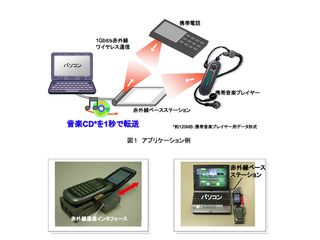Bionic infrared transfers full CD in a second
Breakthrough promises gigabit speeds from old technology

Anyone remember the days before Bluetooth and Wi-Fi when we actually used those little dark plastic infrared windows on our phones and other gadgets? If you do you'll also recall that IR transfers were horribly slow and prone to failure, so it's intriguing to hear that a Japanese firm has upgraded the invisible light technology to make it fit for the modern wireless age.
According to KDDI R&D Laboratories, its new technique [Japanese; PDF] ups the IR transfer speed to 1Gbit/s, which is 250 times the old theoretical limit of 4Mbit/s. Not only that, it has added a layer of stability that should eliminate those old scenes where would-be IR exchangers ended up saying "Oh screw this - just tell me your number instead."
Lasers, not diodes
The new IR method relies on swapping the old LED for a new semiconductor laser that can 'blink' far faster than any diode (think of a super-fast semaphore lamp). Throw in a chunk of nonvolatile memory for storing data during transfers and Bob's your high-speed data-chucking uncle.
KDDI suggests the new infrared technology could be used in PCs and mobile devices, particularly phones. If its claims of transferring a full CD of music in under a second prove accurate, then we're looking a seriously useful revival of some old gadgetry.
Are you a pro? Subscribe to our newsletter
Sign up to the TechRadar Pro newsletter to get all the top news, opinion, features and guidance your business needs to succeed!
J Mark Lytle was an International Editor for TechRadar, based out of Tokyo, who now works as a Script Editor, Consultant at NHK, the Japan Broadcasting Corporation. Writer, multi-platform journalist, all-round editorial and PR consultant with many years' experience as a professional writer, their bylines include CNN, Snap Media and IDG.
